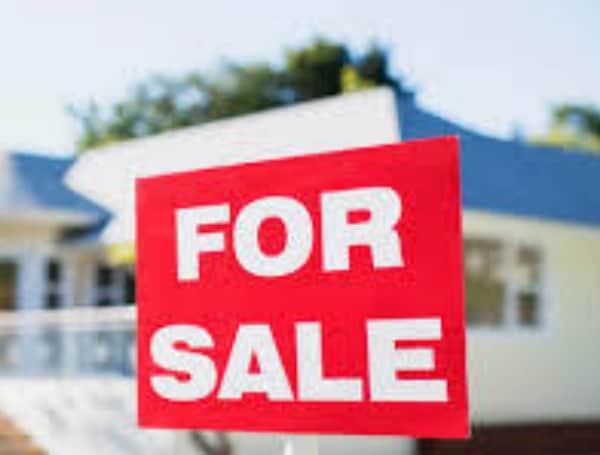Existing-home sales declined in February, following two prior months of gains, according to the National Association of Realtors. Month-over-month, only one major region saw an increase in February, but all four U.S. regions recorded year-over-year gains.
Total existing-home sales completed transactions that include single-family homes, townhomes, condominiums, and co-ops, decreased 6.6% from January to a seasonally-adjusted annual rate of 6.22 million in February. Sales in total climbed year-over-year, up 9.1% from a year ago (5.70 million in February 2020).
“Despite the drop in home sales for February – which I would attribute to historically-low inventory – the market is still outperforming pre-pandemic levels,” said Lawrence Yun, NAR’s chief economist.
He cautioned of a possible slow down in growth in the coming months as higher prices and rising mortgage rates will cut into home affordability.
“I still expect this year’s sales to be ahead of last year’s, and with more COVID-19 vaccinations being distributed and available to larger shares of the population, the nation is on the cusp of returning to a sense of normalcy,” Yun said. “Many Americans have been saving money and there’s a strong possibility that once the country fully reopens, those reserves will be unleashed on the economy.”
The median existing-home price for all housing types in February was $313,000, up 15.8% from February 2020 ($270,400), as prices rose in every region. February’s national price jump marks 108 straight months of year-over-year gains.
Other news: Trump’s Former Intel Director Expects Eye-Opening Report on UFOs This Spring
NAR’s 2021 Home Buyers and Sellers Generational Trends Report, released last week, highlights some of the effects of these price leaps, including buyers’ struggles with saving enough money for a down payment.
“Home affordability is weakening,” Yun said. “Various stimulus packages are expected and they will indeed help, but an increase in inventory is the best way to address surging home costs.”
According to Freddie Mac, the average commitment rate for a 30-year, conventional, fixed-rate mortgage was 2.81 in February, up from 2.74% in January. The average commitment rate across all of 2020 was 3.11%.
Total housing inventory at the end of February amounted to 1.03 million units, equal to January’s inventory and down 29.5% from one year ago (1.46 million). Unsold inventory sits at a 2.0-month supply at the current sales pace, slightly up from January’s 1.9-month supply and down from the 3.1-month amount recorded in February 2020. NAR first began tracking the single-family home supply in 1982.
Properties typically remained on the market for 20 days in February, down from both 21 days in January and from 36 days in February 2020. Seventy-four percent of the homes sold in February 2021 were on the market for less than a month.
First-time buyers were responsible for 31% of sales in February, down from 33% in January and from 32% in February 2020. NAR’s 2020 Profile of Home Buyers and Sellers – released in late 2020– revealed that the annual share of first-time buyers was 31%.
Individual investors or second-home buyers, who account for many cash sales, purchased 17% of homes in February, up from 15% in January and equal to the percentage from February 2020. All-cash sales accounted for 22% of transactions in February, up from both 19% in January and from 20% in February 2020.
Distressed sales – foreclosures and short sales – represented less than 1% of sales in February, equal to January’s percentage but down from 2% in February 2020.
Single-family and Condo/Co-op Sales
Single-family home sales decreased to a seasonally-adjusted annual rate of 5.52 million in February, down 6.6% from 5.91 million in January, and up 8.0% from one year ago. The median existing single-family home price was $317,100 in February, up 16.2% from February 2020.
Existing condominium and co-op sales were recorded at a seasonally-adjusted annual rate of 700,000 units in February, down 6.7% from January and up 18.6% from one year ago. The median existing condo price was $280,500 in February, an increase of 12.3% from a year ago.
“This year, we’ve seen fair housing protections extended, recognized RealtorsÒ’ remarkable volunteerism, and are collaborating with policymakers to increase revitalization endeavors in numerous neighborhoods,” said NAR President Charlie Oppler, a Realtor® from Franklin Lakes, N.J., and the CEO of Prominent Properties Sotheby’s International Realty. “We have made an incredible amount of notable progress thus far in 2021, and NAR is committed and encouraged to continue those efforts.”
Regional Breakdown
Compared to one year ago, median home prices increased in each of the four major regions.
February 2021 saw existing-home sales in the Northeast fall 11.5%, recording an annual rate of 770,000, a 13.2% increase from a year ago. The median price in the Northeast was $356,000, up 20.5% from February 2020.
Existing-home sales in the Midwest dropped 14.4% to an annual rate of 1,310,000 in February, a 2.3% rise from a year ago. The median price in the Midwest was $231,800, a 14.2% climb from February 2020.
Existing-home sales in the South decreased 6.1%, posting an annual rate of 2,770,000 in February, up 9.9% from the same time one year ago. The median price in the South was $271,200, a 13.6% increase from a year ago.
Existing-home sales in the West rose 4.6% from the month prior, recording an annual rate of 1,370,000 in February, a 12.3% jump from a year ago. The median price in the West was $493,300, up 20.6% from February 2020.
The National Association of Realtors® is America’s largest trade association, representing more than 1.4 million members involved in all aspects of the residential and commercial real estate industries.
Support journalism by clicking here to our gofundme or sign up for our free newsletter by clicking here.
